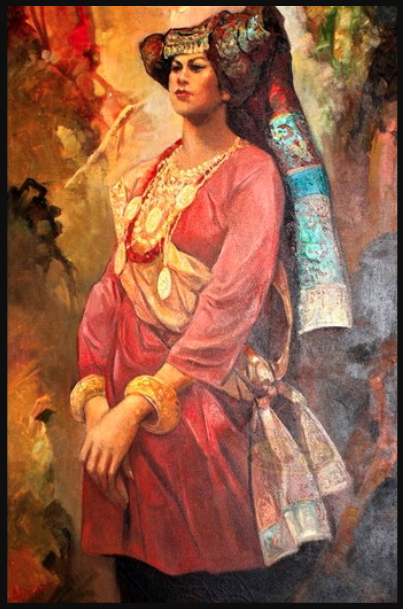By Rey Fachry, BIDUK Program Officer
Pop singer Beyoncé’s all-time hit “Run the World (Girls)” gives us an example of how the world would be if it were literally run by girls. However, one does not need to search too far to find this world as the place where it happens exists on the horizon.
When I was a child, my grandmother used to tell me stories whenever I came to visit her house, stories about a society with women leaders, a society ruled by women in every aspect such as education, culture, economics, laws, and even trade. Turns out, these were true stories of her homeland, and the people of Minangkabau.
My grandmother hails from the highlands of Western Sumatra province, from a small nagari or village called Koto Gadang, now famous for its artisanal silver jewellery industry. Being a woman in the Minangkabau culture means my grandmother will become the leader of the family. She will inherit all her parents’ properties like houses and rice paddies, her children will have to take up her family name and her husband will be considered as a guest in their family’s ancestral house. This is among many adat or customs with which she must comply.

Being led mostly by women (men hold most public political and religious positions of leadership), Minangkabau culture carries many customs that contribute to the betterment of society. One of the important concepts of the Minangkabau culture is “Bundo Kanduang,” or birthmother. Bundo Kanduang is the Minangkabau peoples’ personification of the women’s identity — the one that gives birth to a person, feeds them, and educates them. Bundo Kanduang is an integral part of Minangkabau society, acting as guide for the living and the guardian of Minangkabau culture.
But, as my grandmother once said, just as the Greeks viewed the Earth as Mother Nature, Bundo Kanduang can also be the personification of nature, and the way nature gives life for people to flourish just like their mother. This concept is super important to the people of Minangkabau as one of the old Minangkabau proverbs said “Alam takambang jadi guru,” or nature is the teacher of life. Minangkabau people learn well from the nature surrounding them and mother nature is viewed as the first teacher that children encounter in life. This results in a well-maintained and relatively pristine natural environment around the province of Western Sumatra, making the province one of the greenest provinces in Indonesia.
In practice, Bundo Kanduang often refers to the women leaders of families that gather around, providing guidance and services for the people of Minangkabau. They are involved in many activities such as providing parenting training to newlyweds, shaping the attitude of the children of Minangkabau, deciding the prices of commodities, and even to some extent deciding on the usage of traditional lands in their area.
This might sound like a fantasy utopia for some people, but not for the people of Minangkabau. Recognized as the largest matrilineal society in the world, the Minangkabau people currently number more than four million across Indonesia, a population similar in size to the city of Los Angeles altogether. And because of its uniqueness and complexity, theirs is one of the most prominent cultures in Indonesia.
Just like Queen Bey said “My persuasion can build a nation” the women of Minangkabau have successfully built a culture that has survived generations and continues to expand further.
Reyhan Fachry is Program Officer of BIDUK, a DFAT-funded debt fund administered by Athena Global. BIDUK is purpose-built to supply capital to SGBs, and is currently operating in Indonesia. To learn more about BIDUK see www.bidukindonesia.com, and their informative video series.



0 Comments